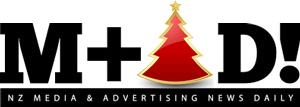AUCKLAND, Today: KPEX is New Zealand’s second-largest online media platform, after Google. “It offers greater audience reach than Facebook and YouTube combined in this region,” says Kiwi Premium Ad Exchange ceo Simon Birkenhead.
“Essentially, we are a premium, brand-safe alternative to Google and Facebook in New Zealand,” he says.
“Offering an alternative to FB/Google display network, KPEX built an audience planning tool using Lotame’s API to reach more targeted audience segments from trusted publishers’ first-party data.
“Now they’re seeing over three times more traffic on their audience planning tool page and over 30 people using this tool per day to explore KPEX’s audiences across their brand-safe inventory.”
Simon Birkenhead agreed to an in-depth Q&A with M+AD …
You launched an audience planning tool using Lotame’s API? Tell us more about the tool.
KPEX has over 500 audience segments that we have built within Lotame, using the first party data shared with us by the 10 publishers and 68 sites that are part of the KPEX network, including Stuff, NZME, Mediaworks, and Homes.co.nz.
We overlay these audiences onto KPEX’s online ad inventory to help advertisers reach people who are most likely to be interested in their message.
However, identifying the best segment(s) for each brand has been a very manual process, with KPEX receiving a campaign brief from an agency (which is often quite vague) and having to go back and forth with the agency to agree the segments they want to use.
We identified a need for a self-service tool that buyers could use to explore KPEX’s audience segments without having to contact our sales team, thereby fast tracking the briefing process.
KPEX uses very tight recency and frequency settings to build our segments. In most cases, we require four signals of a user’s interest in a particular topic within either a 10 day period (for fleeting interests, like buying insurance) or 30 day period (for long term interests, like sport or cars).
This is much more restrictive than most other data providers in New Zealand. Consequently, the number of users and devices in our segments can vary from week to week. As agencies want to know what reach they can achieve with our audience segments, it was important for us to provide a real-time lookup from Lotame on the volume of unique devices in each of our segments.
Therefore we worked with Lotame to utilise their API for this real-time lookup.
Our new audience planning tool (at www.kpex.co.nz/audience-planning-tool) showcases the 130 most popular audience segments that KPEX offers, grouped into 13 categories:
- Automotive
- Business
- Real estate & home improvement
- Finance
- Lifestyle & interest
- Entertainment
- Travel
- Sport
- Shopping habits
- Life stage
- News reader
- Demographic
- Geographic
Each segment includes a description and a real-time indicator of the number of unique devices reachable through that segment.
Tell us about your partnership with Lotame?
We partnered with Lotame a couple of years ago in order to offer audience targeting across KPEX’s 68 sites.
Most targeting data in New Zealand is of poor quality as algorithms are used to generate look-a-likes from a very small selection of data. That’s why most data providers do not reveal their sources. At KPEX we only use first party data from our publishers so it is based on real people’s on-site behaviours and therefore much more accurate.
We chose Lotame as the data management platform to aggregate and deduplicate this data across all our sites and build out our very detailed audience segments.
KPEX started as an alternative to fight the FB-Google duopoly. How’ve you evolved in this market against the digital giants?
KPEX’s scale in New Zealand makes us the country’s second largest online advertising platform, with greater audience reach than both Facebook and YouTube. However, unlike the social platforms, KPEX’s sites only offer premium, curated content that is 100% brand safe.
Essentially, we are a premium, brand-safe alternative to Google and Facebook in New Zealand. We have grown our reach by integrating additional publishers, and we have some new sites coming into the network over the next few months.
Our audience targeting puts us on-par with the targeting offered by Facebook and Google. And we have recently launched new ad formats, like native, to offer a variety of formats to buyers.
Is the audience tool another initiative to fight FB/Google’s monopolization of advertising dollars? How?
The advantage that Facebook and Google have, which has helped support their growth, is the easy way that advertisers can run campaigns across their networks. At KPEX our goal is to make running campaigns across our inventory as easy as possible for buyers.
The audience planning tool is the first new product we have released under this goal, and we have some additional products being planned for launch later in the year to enable even more buyers to easily run campaigns with KPEX.
Transparency and brand safety are still increasing concerns. What is KPEX doing to ensure a brand-safe and transparent ad environment?
Brand safety is central and core to KPEX’s proposition to advertisers, and our key differentiator to Facebook and Google.
We recently switched all our inventory from being ‘masked’ (whereby all inventory is labelled as ‘kpex.co.nz’) to being fully transparent (so the full URL of every ad request is fully exposed to buyers).
We made this change to provide greater assurance to buyers about where their ads will be displayed. In addition, we are proud of the way KPEX and our publishers reacted following the shooting in Christchurch last month.
Within hours of the incident, most of our publishers paused all advertising on their sites, and all continue to block ads from appeared on any content related to the Christchurch shooting.
This had a huge revenue impact for KPEX and our publishers, but it was the right thing to do as no advertiser wanted their ads to appear against this content.
This contrasts with the approach taken by Facebook, Google and YouTube, who continued to run ads against this content.
Do you have any other developments in pipeline with Lotame?
We are working on a v2 of our audience planning tool that will provide further functionality to help agencies with their campaign planning.
Thank you.
Share this Post



